Sunnyside
Introduction
Text-to-speech Audio
Images
View towards Morgantown from the top of Sunnyside, ca. 1891-1892.
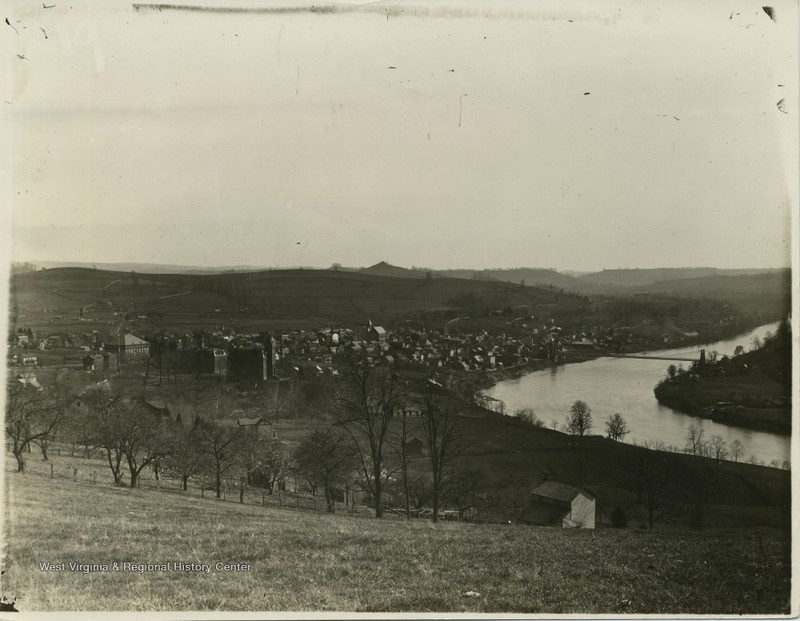
Sunnyside as seen from Westover, ca. 1905-1925
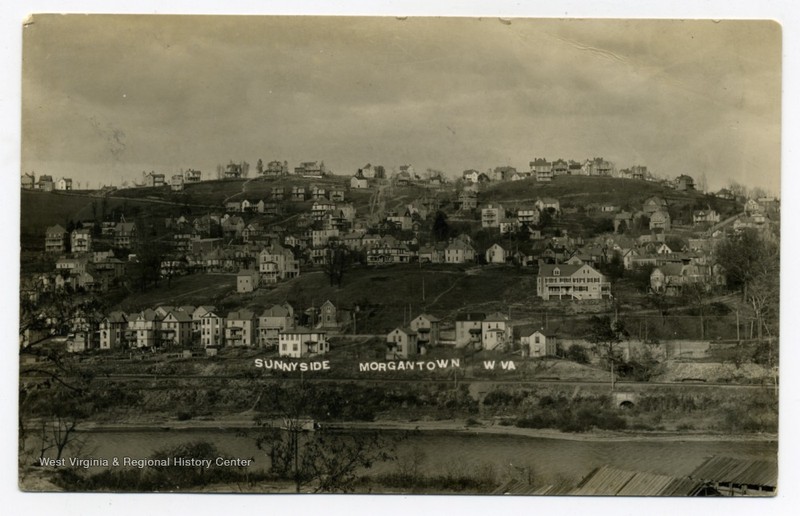
View of Mountaineer Field from Sunnyside

A gathering of students outside Rusted Musket
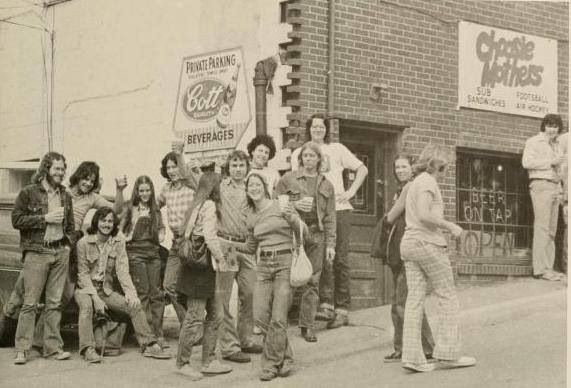
View up University Avenue, 1981
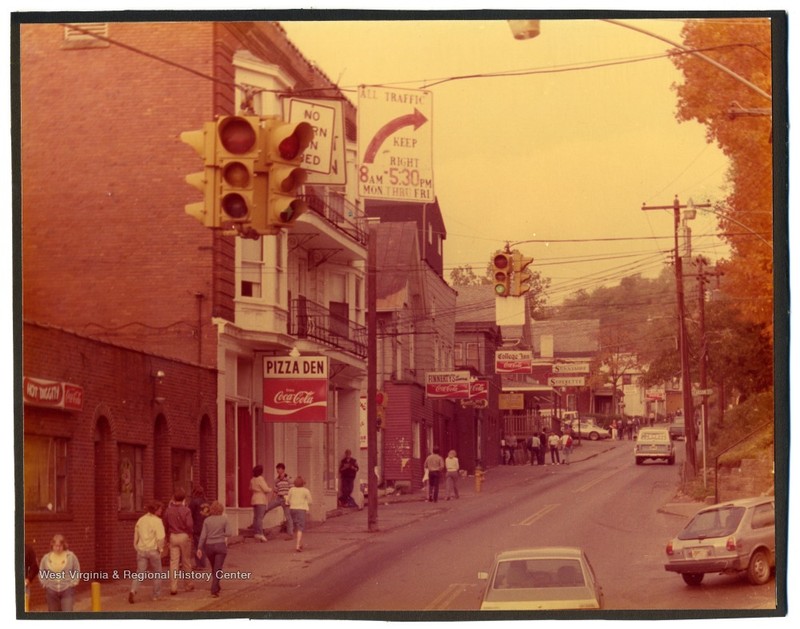
Demolition of houses between 2nd and 3rd Street to make room for WVU housing buildings
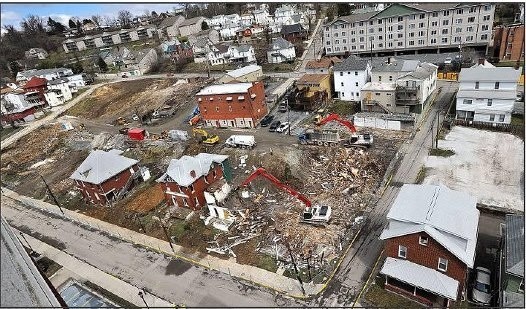
Front view of University Place and Seneca Hall apartments
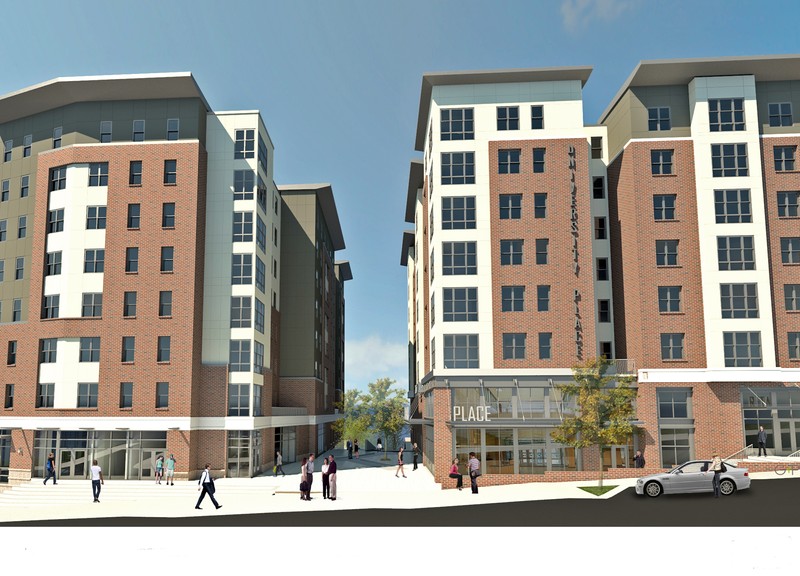
University Place/Seneca Hall under construction
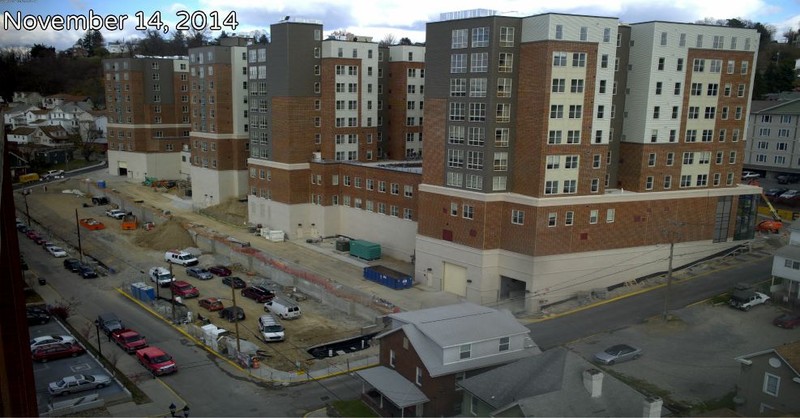
Construction of U Club Sunnyside during early 2016
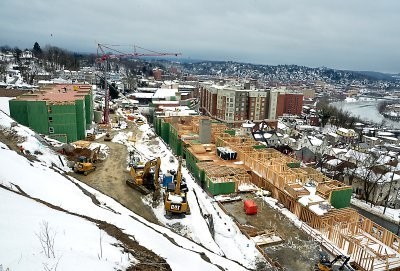
Backstory and Context
Text-to-speech Audio
Sunnyside’s roots are tied to the boom in the glass manufacturing industry that Morgantown experienced in the last two decades of the nineteenth century. Immigrants from all over Europe and Americans from many states came to Morgantown to work. The Seneca Glass Company was a particularly prolific employer and homes for the workers began to appear across from the Seneca Glass Factory on Beechurst Avenue. This cluster of houses was known as the Beechurst Addition, or simply Seneca. Demand for further housing by workers helped spur the creation of the Sunnyside neighborhood.
Sunnyside developed rapidly in the 1890s as a working-class neighborhood. Families often shared their homes with other families or rented rooms out to boarders. These boarders were typically industrial workers, though students were another common kind of renter. Informal ethnic housing clusters arose for the wide variety of immigrants. However, it was illegal for non-whites to own or rent houses in Sunnyside. The population of Sunnyside was diverse and culturally disparate, but generally united by a working-class environment.
By the 1920s, the influence of nearby West Virginia University had begun to permeate Sunnyside. Students increasingly chose to live in the neighborhood, due in part to the construction of the first Mountaineer stadium at the edge of residential area. Another likely factor in the influx of students was the proliferation of small businesses. University Avenue, which bounds Sunnyside at the top of the hill, supported dozens of businesses including markets, mechanics, and laundromats. Many of these businesses chose to build on the perception of Sunnyside as a unified community by including the name of the neighborhood in their business names. A final factor enticing students to Sunnyside was the advent of Greek housing. These facilities traded affordability for amenities and many students took advantage of this housing option.
In the fifteen years following WWII (1945-1960), the culture of WVU shifted dramatically. It was during this time period that Morgantown became a true college town and saw the full integration of WVU students with the general populace, which led to fewer students living on campus. As glass factories closed and Morgantown’s economy became increasingly university-centric, students became a majority in Sunnyside. By 1960, students had practically completely pushed out other populations in Sunnyside and a new generation of bars, restaurants, and other service businesses appeared. The houses in Sunnyside, many over sixty years old, were neglected by an ever-revolving door of careless students and negligent landlords. These problems were exacerbated by Sunnyside becoming the center of party culture at WVU. Sunnyside developed a reputation for rowdy parties, petty crime, and alcohol related injuries and even deaths.
WVU has become increasingly invested in the wellbeing of Sunnyside over the last twenty years. In 2002, the Campus Neighborhoods Revitalization Corporation (Sunnyside Up) was created as a partnership between WVU and the city of Morgantown. Sunnyside Up's mission was to transform the neighborhood using government tax funds. The University also became directly involved when they purchased entire blocks in 2013 and erected a set of apartment buildings to be used as campus housing. Private developers followed suit in building apartment complexes. The new construction in Sunnyside has been met with mixed reactions. Some lament the loss of a culturally vibrant sector while others believe the development to be a necessary step for progress.
Sources
Boulware, Jenny. Glass Blowing and Community Building: A History of Morgantown, West Virginia's Sunnyside Neighborhood, 1890-2013. West Virginia History: A Journal of Regional Studies, vol. 9, no. 1. Published January 1st 2015.
Curtin, Pamela Yvonne. 'Home Sweet Away-From-Home?' Morgantown, West Virginia's Sunnyside Neighborhood as a Cultural Landscape, WVU Research Repository. January 1st 2017. Accessed July 23rd 2020. https://researchrepository.wvu.edu/cgi/viewcontent.cgi?article=6463&context=etd.
Leslie, Emily. What happened to Sunnyside? Where did it all go?, Daily Athenaeum. May 12th 2015. Accessed July 23rd 2020. https://www.thedaonline.com/news/what-happened-to-sunnyside-where-did-it-all-go/article_fbefe0fe-f382-11e4-b08d-0fd201495fde.html.
Projects, Morgantown Area Partnership. Accessed July 23rd 2020. https://www.morgantownpartnership.com/neighborhoods-revitalization/projects/.
"Then & Now: Sunnyside." Morgantown Magazine Morgantown Magazine. N.p., n.d. Web. 1 Dec. 2016.
“Work Continues on U Club Sunnyside.” The Dominion Post - Work Continues on U Club Sunnyside, 28 Jan. 2016, www.dominionpost.com/U-Club-Sunnyside-JSM.
WVU's renovation plans for Sunnyside generate outrage, Mountaineer News Service. December 7th 2012. Accessed July 23rd 2020. http://mountaineernewsservice.com/wvus-renovation-plans-for-sunnyside-generate-outrage/.
West Virginia & Regional History Center
West Virginia & Regional History Center
West Virginia & Regional History Center
West Virginia & Regional History Center
